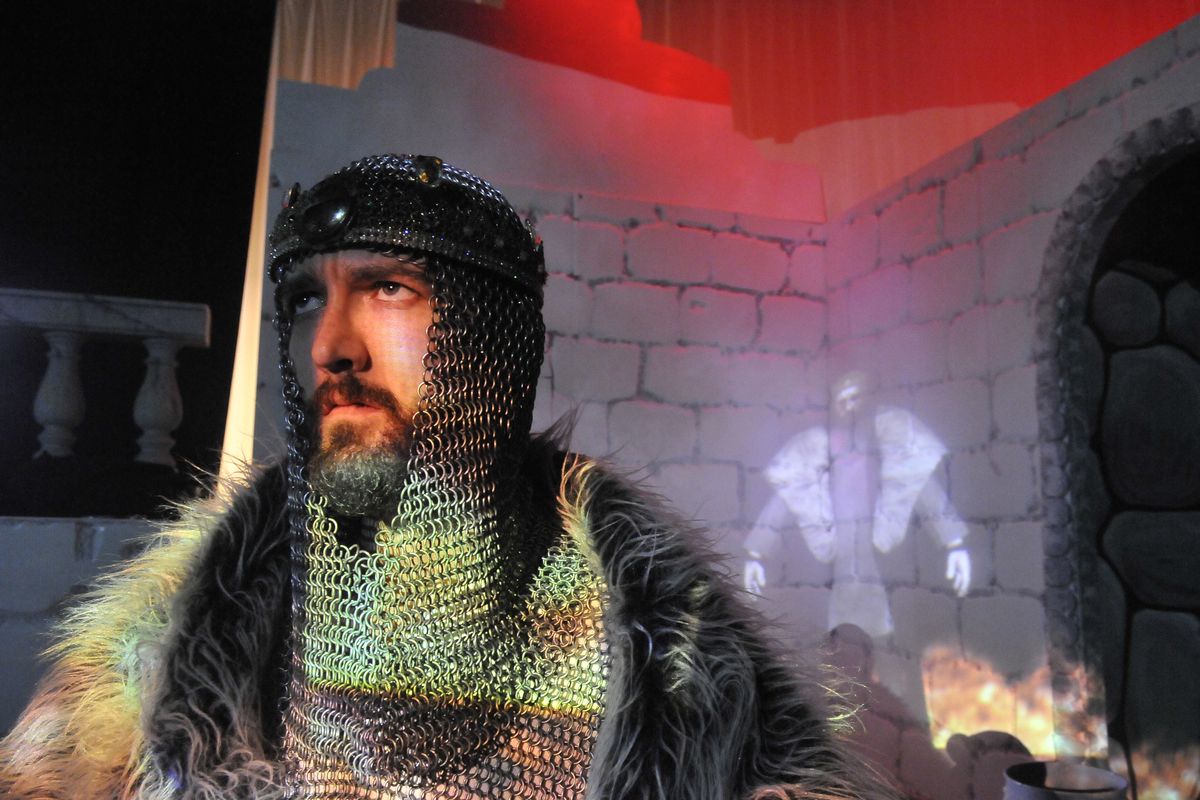Dad hath power
Thanks to a team of local college techies, the father in SFCC’s production of ‘Hamlet’ will virtually dazzle

With the flames of purgatory at his feet and open sores on his face, the ghost of Hamlet’s father appears particularly unearthly in Spokane Falls Community College’s production of Shakespeare’s longest play.
In part of the play, the ghost is made of a curtain of fog and a projected image created through motion-capture technology – and countless hours of design work by a team of students in University of Idaho’s virtual technology and design department.
In a group effort by students and instructors at SFCC and UI, the ghost of Hamlet’s father will be played both by actor Geoff Lang and a 3-D apparition based on him.
“This is the first time I’ve done anything like this, and as far as I know it’s the first time anyone in Spokane has done anything like this,” said Bill Marlowe, the play’s director and a drama instructor at SFCC.
Students in UI’s virtual technology department blend digital tools, art and design to create interactive virtual environments and experiences. They might be creating games or other forms of entertainment, but they also might be working on communications, industry or education projects. To help teach Korean War history, they created a role-playing game that lets children take on the characters of military figures.
In past years, virtual technology students worked with a theater in Moscow, creating a series of animations to appear between set changes. For another production, they created “liquid scenery” that morphed on a screen on stage, responding to an emotion or action in the play.
Step one for the “Hamlet” project, under the direction of instructor Brian Cleveley: Read the play to get familiar with the ghost and its environment. Then the students got to work with Lang, capturing his movements with Kinect, a motion-sensing device designed for use with the Xbox 360 video game console.
The students used the data they collected to build a digital skeleton, or stick figure, of the ghost. They digitally sculpted and painted its face, giving it a “rugged, undead kind of look,” and modeled the ghost’s body and clothes, said Megan Kora, one of several virtual design students watching from the theater seats last week as the set and projection equipment were assembled and tested.
The result is a 3-D, digital representation that looks and moves like actor Lang as the ghost. The students created a number of short sequences of action, and it’s the director’s job to fit those sequences into the context of the play – Marlowe hits a key, and the model “acts” for 5 to 10 seconds at a time.
The image is projected onto scenery as well as on fog rising from the floor, giving it ethereal dimension. At one point in the play, there’s a flash of light, and Lang gets his job back, stepping through the fog and taking the stage.
The ghost shrank and grew taller last week as crew members worked installing equipment and making adjustments. As it bent and raised its arms, the ghost’s movements looked a little jerky. The UI students knew they’d spend the weekend in front of their computers, smoothing out those kinks.
It’s been an intense project, the UI students said, involving a variety of digital tools and processes in a short time.
“We’ve gone through the whole range of human emotion on this project,” student Melo Maiolie said.
“Hamlet” was scheduled to open Thursday night in SFCC’s Spartan Theater and continue tonight, with dates through Nov. 18. The production kicks off the community college’s “Denmark season,” Marlowe said, rounded out by Lee Blessing’s “Fortinbras” and Tom Stoppard’s “Rosencrantz and Guildenstern Are Dead.”
Marlowe said that as a director he aims to meet audience’s expectations, but the incorporation of the virtual ghost builds on that.
“Everybody’s expecting an actor to walk out on stage as the ghost,” he said. “This meets their expectations, but also surprises them.”